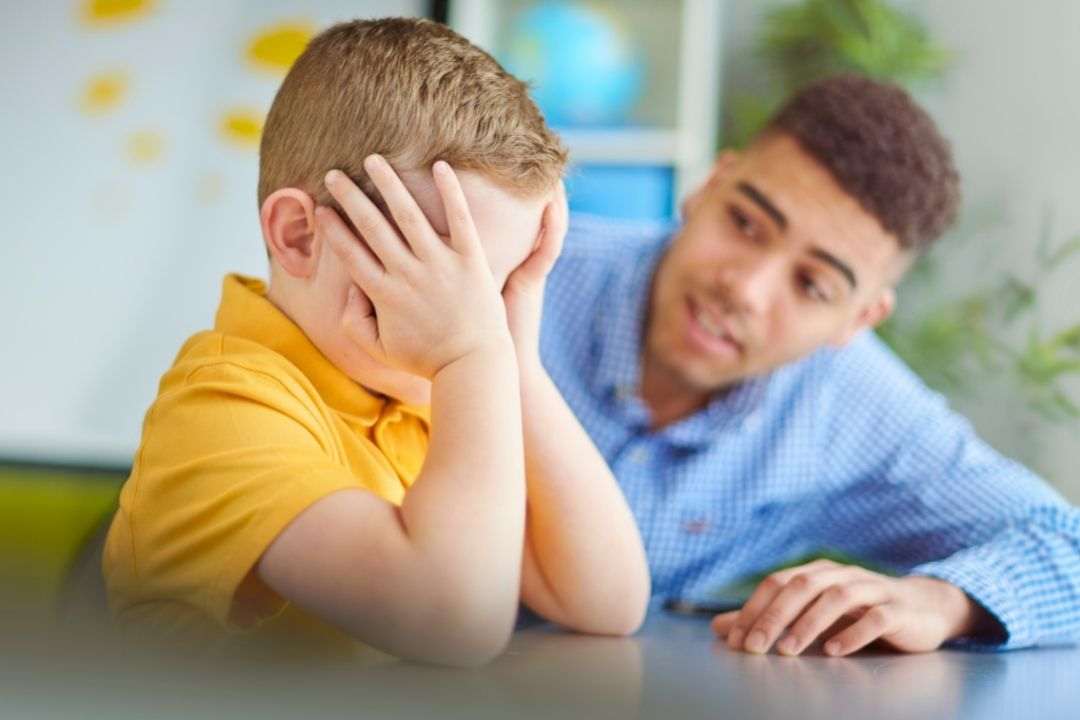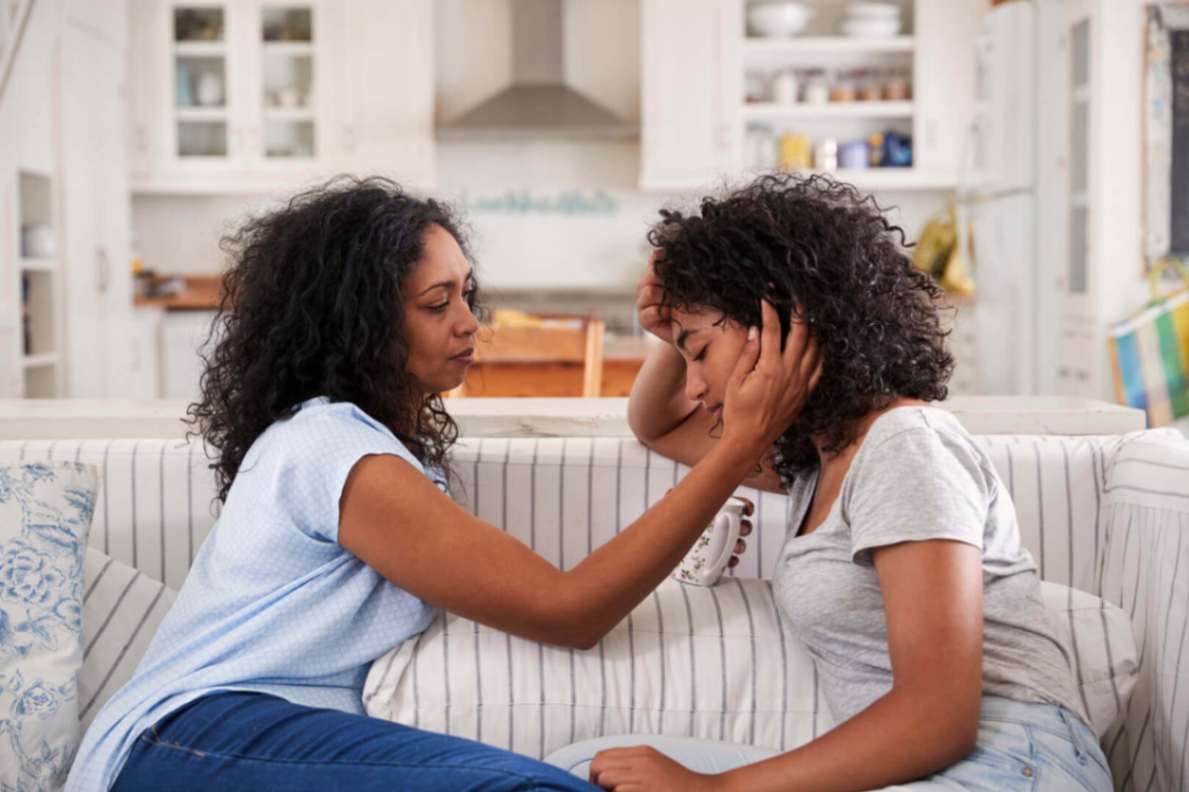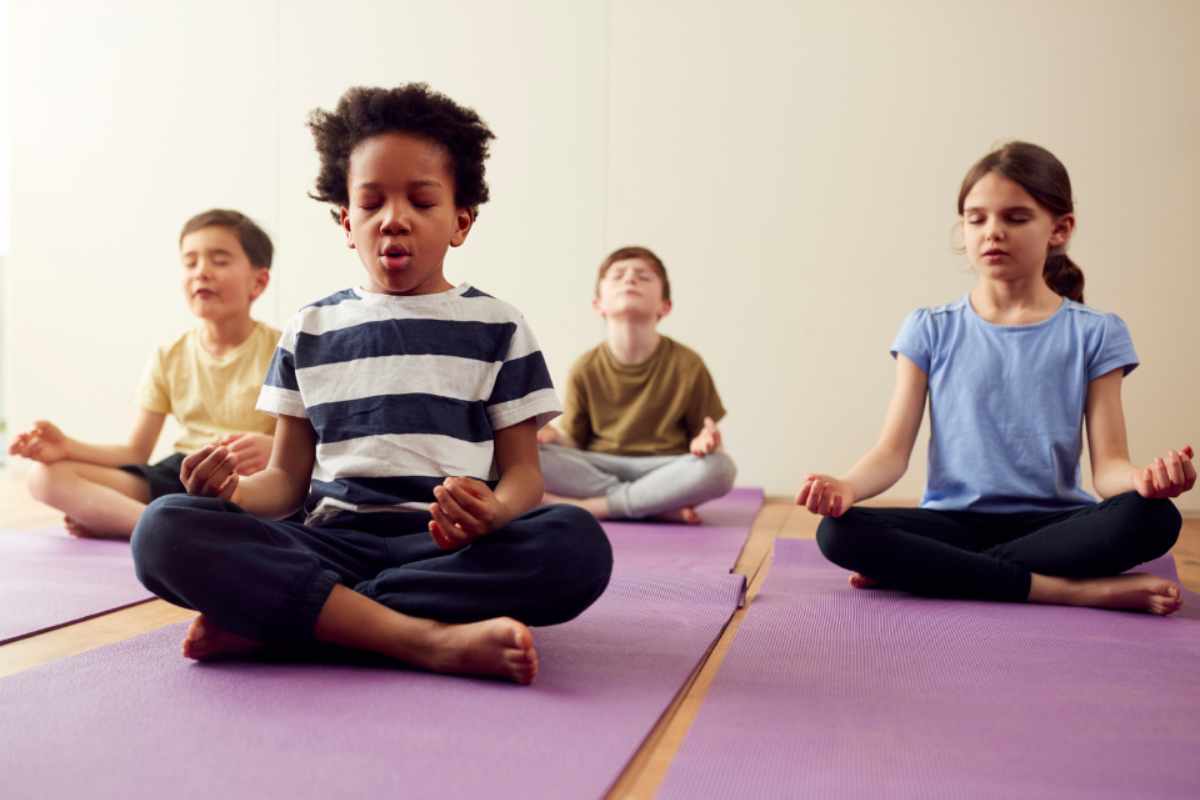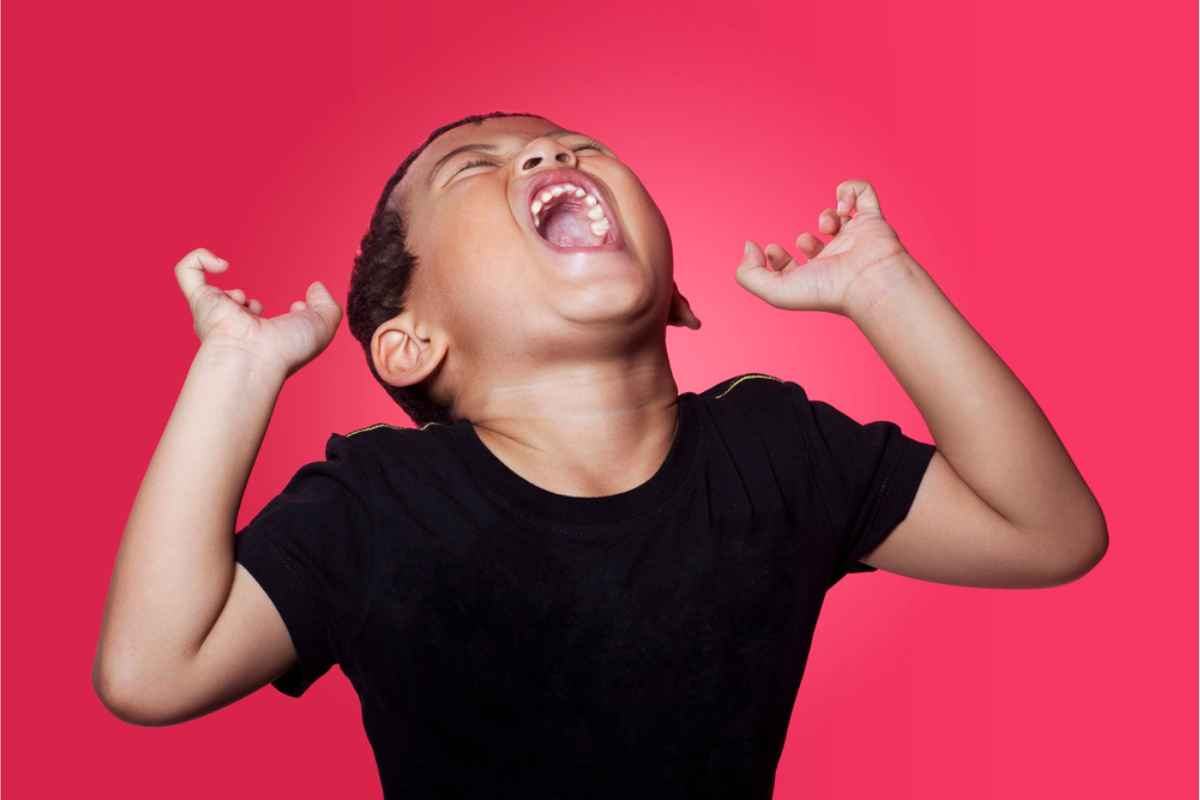January 13, 2020
Childhood Trauma: Why Therapy is Crucial for Healing
Written by Rachel Eddins
Posted in Parenting & Family, Trauma, Grief & Loss and with tags: PTSD/Trauma, child counseling, children

Guided by adults, you almost certainly took precautions as a child. You buckled your seat belt upon entering a car. Wearing a helmet was the norm when riding a bike. You looked both ways before you crossed the street. The list goes on and many items on that list became second nature as you grew into adulthood.
But some threats are not always discussed or even recognized. Therefore, we are not prepared for them. As we grow into adulthood, they too stay with us. This time, however, they are not prudent habits. Instead, they are invisible scars that very much threaten our health and our longevity.
Adverse Childhood Experiences
During childhood, we each experience countless events. These can range from mundane to extreme. The events that fall into an extreme category can play a major role in how we live our lives. When such events are negative or traumatic, they are known as adverse childhood experiences or ACEs.
Every child has ups and downs. An ACE is a different level of stress. It’s intense, chronic, traumatizing, and carries with it innumerable costs. Thus, this can include paying the highest price of all: a shortened life consumed with mental and physical diseases.
Examples of Adverse Childhood Events
Unfortunately, there is no complete list of ACEs and their infinite variations. Childhood trauma comes in many forms — far too many forms to list here. There are, however, commonly seen categories in the realm of childhood trauma.
The general categories and classifications of childhood trauma include:
Personal
- Physical neglect
- Emotional neglect
- Sexual abuse
- Physical abuse
- Verbal abuse
- Severe injury or illness
Family Member-Related
(Again, countless variations here but the following examples are useful for explanation)
- Someone in your family is incarcerated
- Mother is a victim of domestic abuse
- Dealing with a parent who abuses the other parent or
- Relentless and stressful parental conflict
- Alcoholism or substance abuse in either or both parents
- A family member diagnosed with a mental condition
- Loss of a parent through death or divorce or any form of abandonment
- Parents separating or divorce before the child turns 18
Other ACEs:
- Witnessing abuse
- Loss of a caregiver
- Bullying
- Racism and/or sexism
- Homelessness
- Injury, accident, or illness
- Dealing with the foster care or juvenile justice system
- Enduring a disaster, assault, or criminal situation
- Economic hardship
These are not rare instances. Of course, unreported cases are rampant. But even so, studies have found at least two-thirds of adults lived through a single ACE. In addition, some 40 percent of children endure at least two adverse childhood experiences. This is a serious, all-too-common occurrence with long-lasting cognitive impact.
These and other traumatic scenarios wreck havoc on a child’s psyche. The damage can shape a child’s life well into the future. In fact, the long-time outcomes may happen so far after the initial abuse that medical professionals do not see the link.
Childhood Trauma is a Public Health Issue
Almost half of the children in the United States have experienced at least one ACE. Adding to this, roughly one in ten children have endured three or more ACEs.
The incidence of ACEs varies between different races and ethnicities. This presents some common threads — across all regions of the U.S.:
- The lowest ACE rate in every region is among Asian children (national rate: 23 percent)
- The next highest is white (national rate: 40 percent)
- Much higher is Hispanic (national rate: 51 percent)
- The highest numbers are for black children (national rate: 60 percent)
Clearly, adverse childhood experiences have become a major public health issue and the impacts can span across a lifetime.
When faced with trauma, our brains switch into a different gear.
Here’s a small taste of what happens automatically:
- Rapid Heart and Respiration Rate: This provides more energy and oxygen to the body.
- Skin Changes: Blood flow is reduced to surface areas and increased to the muscles and brain. This can manifest in your face appearing either pale or flushed. Another blood flow change involves the body increasing its blood clotting ability in case of major injury.
- Trembling: Tense muscles will often shake as a sign of being ready for action.
- Dilated Pupils: Dilation of the pupils allows for more light to enter the eyes thus enhancing vision.
Aftershocks: Understanding Adverse Childhood Events and Health Problems that Follow
There’s a deep, shattering connection between adverse childhood events and health. You might sum up that connection in a word: aftershocks. The growing number of children who undergo traumatic episodes experience pain and fear during those episodes.
These events transpire at a time of essential brain development. As a result, long after the trauma takes place, the myriad health problems continue.
In the moment, you may feel the acute jolt. This is usually followed by a chronic sense of crisis — varying from low-level to the extreme. How long the chronic state lasts depends on a broad range of unpredictable factors.
That said, there is a third phase that connects adverse childhood events and health.
The Connection Between Adverse Childhood Events and Health
If we were exposed to an environmental toxin, we might logically fear the eventual impact. Unfortunately, most of us aren’t aware of how toxic childhood experiences connect to our health.
Our brains undergo rapid and essential development during childhood. We are not yet equipped to manage intense and ongoing crises. The ensuing trauma can damage the developmental process and lead to health issues in the long-term. Internally, stress produces hormones that are designed to be temporarily present. If hormones like adrenaline and cortisol exist in overload, there is a systemic price to pay.
As adults, we are a little better able to juggle a toxic brew of hormones. It’s far from ideal but our defenses are developed and thus, stronger. As children, we are overmatched. The fallout happens in that moment and re-emerges — in many forms — throughout our lives.
The Cognitive Impact of Traumatic Childhood Events
Adverse childhood experiences cause toxic stress. Left unchecked, this stress damages the development of a child’s brain. Without support, children of toxic stress experience an overload of hormones that impact the structure of their brains. This is happening during a time of rapid cognitive development.
The event happened and the trauma has already resulted. For some of us, We feel recovered and maybe even “moved on.” However, this is not how fallout works. More likely, it manifests in confusing and frustrating ways.
These traumatic events leave a child in a state of high alert, virtually 24/7. A child’s brain is not equipped to deal with this workload. This results in depression, anxiety, and a host of life-altering mental illnesses. Their bodies are also under constant assault. For example, stress hormones like cortisol and adrenaline increase blood pressure and decrease cardiovascular health.
As it is impossible to provide a full list of the range of adverse childhood experiences, we also cannot fully gauge the damage they create.

How Do Adverse Childhood Experiences Impact Health Across a Lifetime?
The impact of ACEs is both physical and emotional. Such children have demonstrated an increased risk of substance abuse (cigarettes, drinking, drugs, etc.), heart disease, depression, and a wide range of dangerous and unhealthy behavior choices. The outcomes range from measurable to intangible, e.g.
- Higher school drop-out rates
- Lower self-esteem
- Altered stress-response functions
- Increased rates of suicide
Those with multiple ACEs often die 20 years earlier than their life expectancy. Financially, studies find the lifetime cost of ACEs adds up to $124 billion in the U.S. alone. Again, this is a major — yet widely under-discussed — public health crisis. It deserves focus and long-term planning. But the individual victims also need support and guidance in the meantime.
Here are just a few of the issues and conditions found to be directly and indirectly related to ACEs:
- Career and workplace issues
- Substance abuse: drugs, alcohol, etc.
- Sexually transmitted diseases (STDs)
- Unintended pregnancies
- Addictive behavior, from smoking to sex and beyond
- Intimate partner violence
- Chronic diseases, including heart disease, osteoporosis, arthritis, anorexia nervosa, gastrointestinal issues, hyperthyroidism, and more
- Dramatically shortened life expectancy
- Inability to focus on a career path
- Chronic health issues without clear causes
- Depression and anxiety, regardless of circumstances
- Sabotaging healthy relationships
The Threat of Childhood Trauma
The list goes on but the main point is that child victims often face adult problems — including health issues. ACEs are linked to these problems. But you may not always recognize how.
What’s absolutely crucial to remember is timing.
The trauma and pain that accompany adverse childhood experiences wreak havoc on a young brain. Hence, childhood is a time of rapid and important cognitive development.
If this development is hindered by the introduction of toxic stress, a child’s brain is not capable of managing such crises. Our children need our help.
Managing Adverse Childhood Events and Health
This process begins with a society that recognizes ACEs and the byproducts they create. Victims need to feel safe discussing the events they endured. We must respect the shame and fear that surrounds ACEs. Victims need validation and they need healing. The people in their life can assist in this process by supporting victims with love and understanding.
Part of that healing also requires professional intervention. This firstly means guiding victims to the counseling they need. In addition, an ACE victim’s loved ones can benefit from counseling. As the victim goes through healing therapies, the people in their life can learn how to support them.
No one asks or deserves to be victimized by adverse events during childhood. No one deserves the negative and inevitable health impacts. But each of them needs and deserves all the healing resources that currently exist. Eddins Counseling Group in Houston, TX has trauma specialists trained to address adverse events from childhood.
How to Support Someone Who Has Experienced Trauma
Provide Acceptance and Recognition
It’s our task to recognize the prevalence of adverse childhood events. Validate their emotions. Children need to be validated and heard.
Normalize the Discussion of Their Experiences
Victims leave in shame and in fear. As friends or family members, we can help by normalizing the conversations children (or adults) need to have.
Moreover, it’s crucial that we give them space and we practice a non-judgmental listening style. The abuse that happens before a child’s brain has developed can take a long time to be processed. Be patient and let the child set the timetable (if they choose to have one).
Time Does Not Heal All Wounds
Childhood trauma is not something we “move on” from. We don’t just “get over it.”
The neurological reactions we had during times of crisis created biological changes in us. We end up in a never-ending, low-level version of fight or flight. This creates a mindset driven by impulse, anxiety, and fear.
Therefore, removing a child from a stressful situation doesn’t initiate healing. The child’s brain has been re-wired, so to speak, to have a lower threshold for perceived threats. This lowered threshold lays a foundation for long-term ongoing health issues and a reduced lifespan.
Victims of trauma may attempt to heal themselves via self-medication. This can take the form of substance abuse, risky behaviors, sexual addiction, smoking, drinking, and binge eating. Each of these, in turn, carries with them more health risks.
The Role of Psychotherapy
We hear a lot about the mind-body connection. You might say, the mind and body are essentially one. This partially explains why the psychological damage inflicted by trauma so deeply threatens our physical health. But that same token, it only makes sense to approach healing with this same mindset. Physical symptoms must be soothed but sustained recovery requires psychotherapy.
Studies abound demonstrating the many emotional and physical benefits of therapy. According to research, these benefits also include DNA changes that counter the initial physical damage. This not only facilitates emotional healing, but it also decreases the threat of early death from physical damage. Seeking out a therapist is a big step toward reclaiming a healthy and productive future.
Getting Help with Adverse Childhood Events
As you can see, traumatic childhood events demand our committed attention. If you know a child enduring such strain please seek help. In addition, that child can benefit greatly from counseling. There is so much to process before healing can begin. The same goes for adults seeking to recover from the adverse childhood events that impact them today. There are many proven therapeutic methods in place for ACE survivors. The first step is to reach out for more information. Eddins Counseling Group, in Houston, TX offers counseling for trauma and children.



















